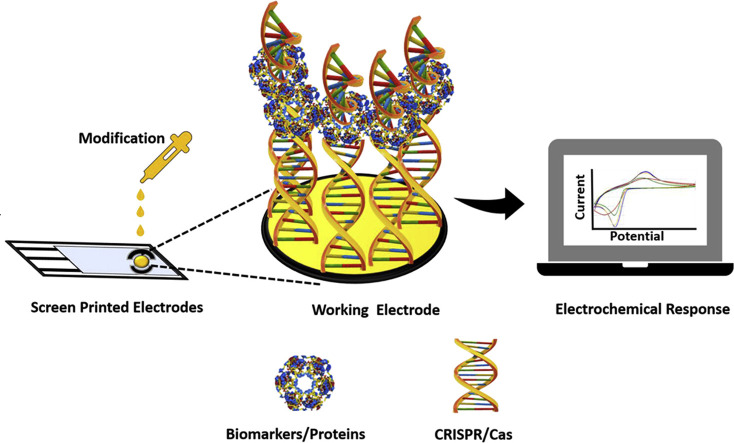- Record: found
- Abstract: found
- Article: not found
Towards CRISPR powered electrochemical sensing for smart diagnostics

Read this article at
Abstract
Even though global health has been steadily improved, the global disease burden associated with communicable and non-communicable diseases extensively increased healthcare expenditure. The present COVID-19 pandemic scenario has again ascertained the importance of clinical diagnostics as a basis to make life-saving decisions. In this context, there is a need for developing next-generation integrated smart real-time responsive biosensors with high selectivity and sensitivity. The emergence of clustered regularly interspaced short palindromic repeats (CRISPR)/Cas biosensing systems has shown remarkable potential for developing next-generation biosensors. CRISPR/Cas integrated electrochemical biosensors (E-CRISPR) stands out with excellent properties. In this opinionated review, we illustrate the rapidly evolving applications for E-CRISPR-integrated detection systems towards biosensing and the future scope associated with E-CRISPR based diagnostics.
Graphical abstract
Related collections
Most cited references48
- Record: found
- Abstract: found
- Article: not found
CRISPR-Cas12a target binding unleashes indiscriminate single-stranded DNase activity
- Record: found
- Abstract: found
- Article: not found

